- Cucumbers and Their Common Diseases
- 1. Powdery Mildew
- 2. Downy Mildew
- 3. Bacterial Wilt
- 4. Anthracnose
- 5. Cucumber Mosaic Virus
- Conclusion
- Fungal Diseases
- 1. Powdery Mildew
- 2. Downy Mildew
- 3. Fusarium Wilt
- 4. Anthracnose
- Bacterial Infections
- 1. Bacterial Leaf Spot:
- 2. Bacterial Wilt:
- 3. Bacterial Fruit Blotch:
- 4. Angular Leaf Spot:
- Viral Infections
- Root Diseases
- 1. Fusarium Wilt
- 2. Pythium Root Rot
- 3. Rhizoctonia Root Rot
- 4. Phytophthora Root Rot
- 5. Clubroot
- Leaf Diseases
- 1. Powdery Mildew
- 2. Downy Mildew
- 3. Leaf Spot
- 4. Anthracnose
- 5. Bacterial Wilt
- Stem Diseases
- 1. Bacterial Wilt
- 2. Fusarium Wilt
- 3. Phytophthora Blight
- 4. Stem Canker
- Pest Infestation
- 1. Aphids
- 2. Spider Mites
- 3. Cucumber Beetles
- 4. Whiteflies
- 5. Slugs and Snails
- Effective Treatments and Prevention
- 1. Fungicides
- 2. Crop Rotation
- 3. Proper Irrigation
- 4. Sanitation
- 5. Resistant Varieties
- 6. Proper Plant Spacing
- 7. Regular Inspections
- 8. Integrated Pest Management
- 9. Mulching
- 10. Nutrient Management
- “Question-Answer”
- What are the most common diseases that affect cucumbers?
- What are the symptoms of powdery mildew?
- How can I treat powdery mildew on cucumbers?
- What is cucumber mosaic virus?
- Can cucumber mosaic virus be cured?
- How can I prevent cucumber diseases in my garden?
- “Video” 3 Reasons Your Cucumber Plants Suddenly Wilt
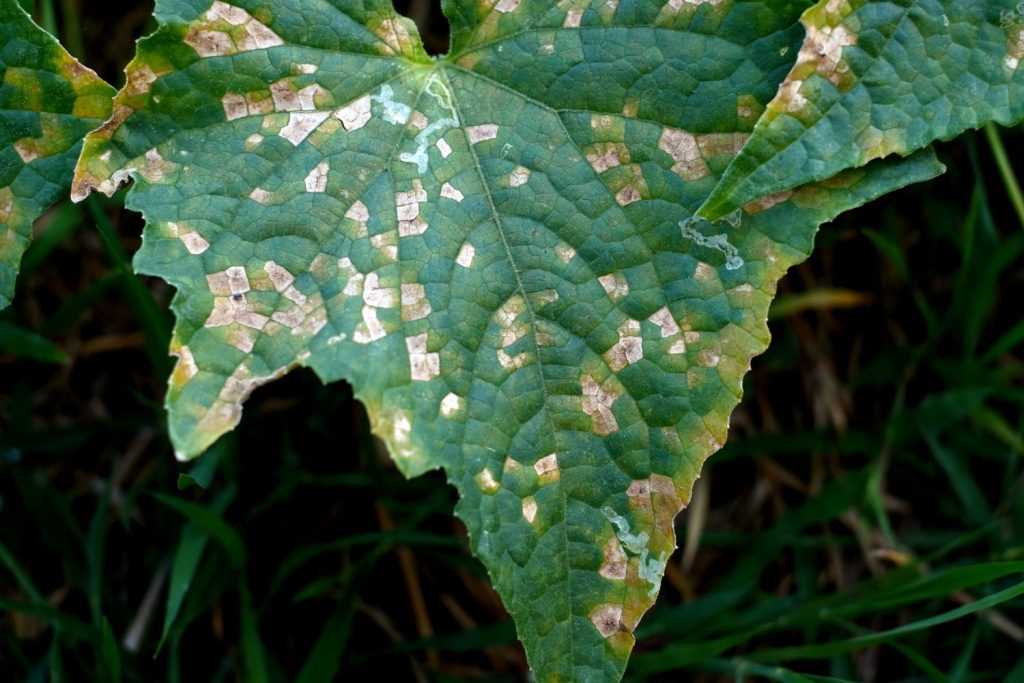
Cucumbers are a versatile and delicious vegetable that are widely enjoyed around the world. However, like any plant, cucumbers are susceptible to a variety of diseases that can impact their growth and overall health. Understanding the common diseases that affect cucumbers is key to preventing and treating these issues effectively.
One common disease that affects cucumbers is powdery mildew. Powdery mildew presents as a white, powdery substance on the leaves and stems of the cucumber plant. This fungal disease thrives in warm and humid conditions, and can quickly spread if left untreated. To treat powdery mildew, it is important to remove any infected leaves or stems and apply a fungicide specifically designed for cucumbers.
Another disease that cucumbers are susceptible to is downy mildew. Downy mildew is caused by a fungus-like organism that thrives in cool and wet conditions. This disease appears as yellow or brown spots on the leaves of the cucumber plant, and can cause the leaves to wilt and die. To prevent and treat downy mildew, it is important to properly space cucumber plants to encourage good air circulation, and to apply a fungicide as necessary.
“Bacterial wilt is yet another common disease that affects cucumbers. This disease is caused by bacteria that are transmitted by cucumber beetles. Infected plants may wilt and die rapidly, and there is no effective treatment once a plant is infected. Prevention is key when it comes to bacterial wilt, and it is important to use insecticides to control cucumber beetles and remove any infected plants from the garden.”
These are just a few examples of the common diseases that can affect cucumbers. It is important for cucumber growers to stay vigilant and take proactive measures to prevent and treat these diseases. By practicing good sanitation, proper spacing, and using appropriate fungicides and insecticides, gardeners can maximize the health and productivity of their cucumber plants.
Cucumbers and Their Common Diseases
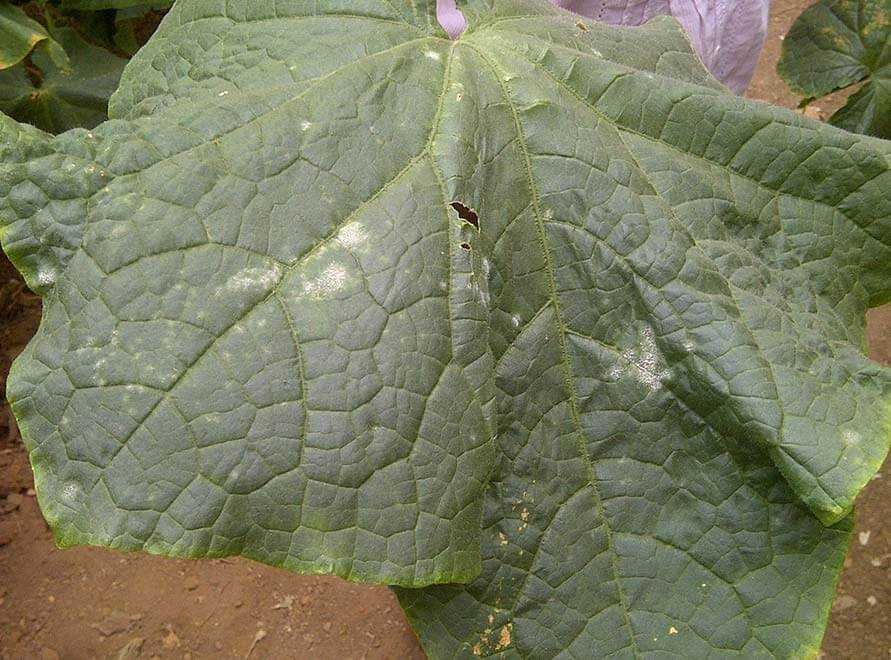
Cucumbers are popular vegetables that are enjoyed by many people around the world. However, like any plant, cucumbers are susceptible to various diseases that can affect their growth and overall health. Understanding these common diseases can help gardeners and farmers take the necessary steps to prevent and treat them.
1. Powdery Mildew
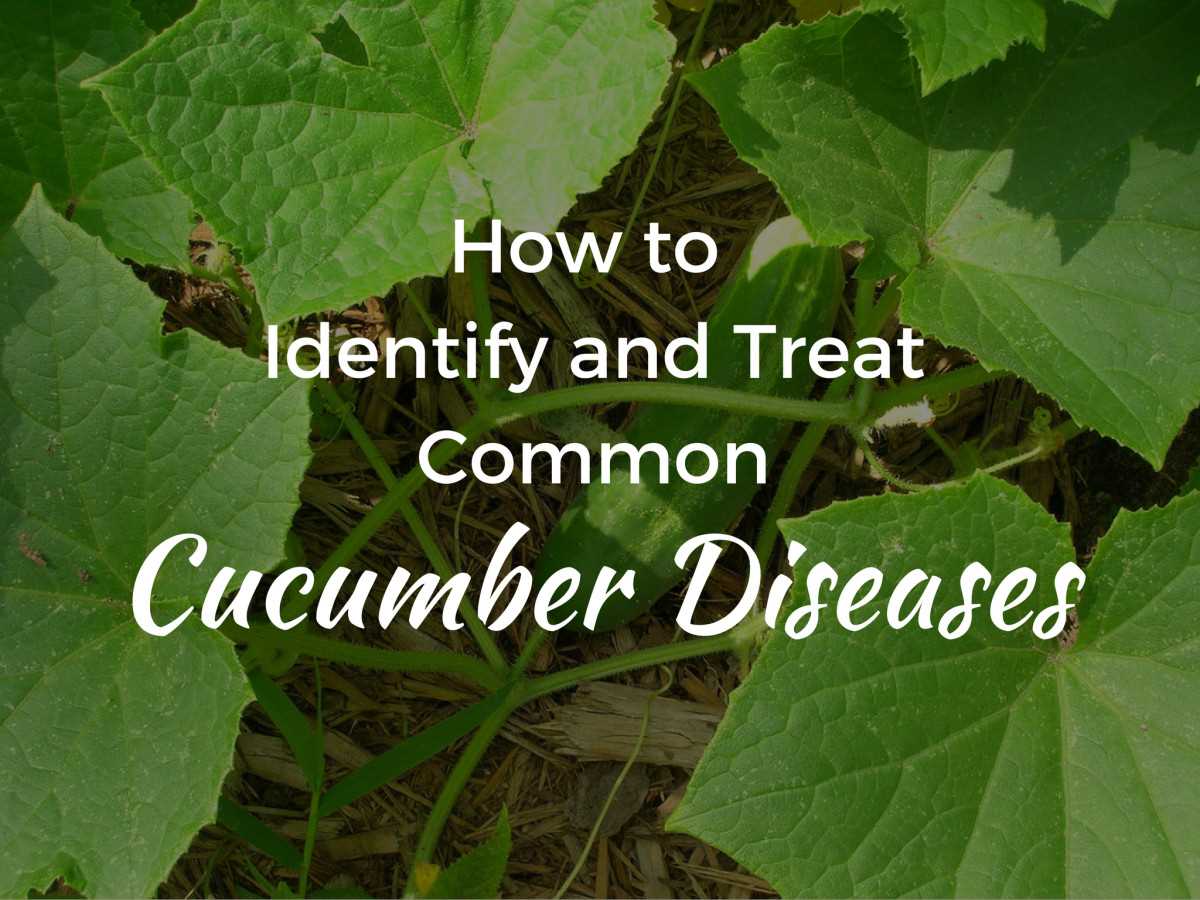

Powdery mildew is a common fungal disease that affects cucumbers and other plants. It appears as a white powdery coating on the leaves, stems, and fruits of the plant. This disease can reduce the plant’s ability to absorb sunlight, leading to stunted growth and poor fruit development. To prevent powdery mildew, it is essential to plant disease-resistant cucumber varieties and provide adequate spacing between plants to promote air circulation. Fungicidal sprays may be necessary to treat severe infections.
2. Downy Mildew
Downy mildew is another common fungal disease that affects cucumbers. Unlike powdery mildew, downy mildew appears as yellowish-green patches on the upper side of the leaves, with a downy growth on the underside. It can cause the leaves to curl and eventually die. To prevent downy mildew, it is important to water the plants at their base and avoid overhead irrigation. Regularly inspecting the plants and removing any infected leaves can also help control the disease. Fungicidal sprays may be necessary for severe infections.
3. Bacterial Wilt
Bacterial wilt is a destructive disease caused by the bacterium Erwinia tracheiphila. It is spread by cucumber beetles and affects the vascular system of the plant, causing wilting and eventual death. Infected plants should be removed and destroyed to prevent the spread of the disease. To prevent bacterial wilt, it is important to control cucumber beetle populations through the use of insecticides or physical barriers such as row covers. Rotating crops and practicing good sanitation can also help reduce the risk of infection.
4. Anthracnose
Anthracnose is a fungal disease that can affect cucumbers and other vegetable crops. It appears as dark, sunken lesions on the leaves, stems, and fruits of the plant. Anthracnose can cause fruit rot and reduce crop yield. To prevent anthracnose, it is important to plant disease-resistant cucumber varieties and provide adequate spacing between plants. Removing infected plant debris and applying fungicidal sprays can also help control the disease.
5. Cucumber Mosaic Virus
Cucumber mosaic virus is a common viral disease that affects cucumbers and other plants. It causes mosaic-like patterns and yellowing of the leaves, stunted growth, and distorted fruits. The virus is primarily transmitted by aphids, so controlling aphid populations is crucial for prevention. Planting disease-resistant cucumber varieties and removing any infected plants can also help minimize the spread of the virus.
Conclusion
Cucumbers are prone to several common diseases, including powdery mildew, downy mildew, bacterial wilt, anthracnose, and cucumber mosaic virus. By understanding the symptoms and taking preventive measures, such as planting disease-resistant varieties, practicing good sanitation, and using appropriate treatments when necessary, gardeners and farmers can effectively manage these diseases and ensure the health and productivity of their cucumber plants.
Fungal Diseases
Fungal diseases are a common problem in cucumber plants and can cause significant damage to the crop. These diseases are caused by various types of fungi that thrive in warm and humid conditions. It is important to identify and treat these diseases early to prevent the spread and minimize crop losses.
1. Powdery Mildew
Powdery mildew is a fungal disease that appears as a white powdery coating on the leaves, stems, and fruits of cucumber plants. It thrives in dry conditions with high humidity and moderate temperatures. Powdery mildew can reduce photosynthesis, stunt plant growth, and decrease fruit quality. To manage this disease:
- Choose cucumber varieties that are resistant to powdery mildew.
- Avoid overcrowding plants to improve air circulation.
- Apply fungicides labeled for powdery mildew control at regular intervals.
- Remove and destroy infected plant parts to prevent further spread.
2. Downy Mildew
Downy mildew is another common fungal disease that affects cucumbers. It manifests as yellow spots on the upper surface of leaves and a gray fuzzy growth on the undersides. Downy mildew thrives in cool and humid conditions. To manage this disease:
- Plant resistant cucumber varieties.
- Avoid overhead irrigation and water plants early in the morning.
- Apply fungicides labeled for downy mildew control preventively.
- Remove and destroy infected plant material to prevent further spread.
3. Fusarium Wilt
Fusarium wilt is a soilborne fungal disease that affects cucumber plants. It causes wilting, stunting, and yellowing of leaves, and can lead to the death of the plant. The fungus infects the vascular system, clogging it and preventing water and nutrient uptake. To manage this disease:
- Plant resistant cucumber varieties.
- Practice crop rotation to prevent buildup of the pathogen in the soil.
- Avoid overwatering plants as the fungus thrives in moist conditions.
- Remove and destroy infected plants to prevent further spread.
4. Anthracnose
Anthracnose is a fungal disease that affects cucumber fruits, causing dark sunken lesions with pinkish spore masses. It spreads through infected plant debris and thrives in warm and humid conditions. To manage this disease:
- Plant disease-resistant cucumber varieties.
- Avoid overhead irrigation and wetting the foliage.
- Apply fungicides labeled for anthracnose control preventively.
- Remove and destroy infected plant material to prevent further spread.
By taking proactive measures to prevent and manage fungal diseases, cucumber growers can protect their crops and ensure a healthy harvest.
Bacterial Infections
Bacterial infections are a common problem that can affect cucumber plants. These infections are caused by various types of bacteria and can lead to significant damage if not treated promptly. Here are some of the common bacterial infections that affect cucumbers and effective treatment methods:
1. Bacterial Leaf Spot:
Bacterial leaf spot is a common bacterial infection that affects cucumber plants. It is caused by the bacterium Pseudomonas syringae. The infection leads to the development of small, dark lesions on the leaves, which may eventually turn yellow and drop off. To control bacterial leaf spot, it is important to remove and destroy infected plant material and avoid overhead irrigation, as wet foliage promotes disease spread. The use of copper-based fungicides can also help in controlling the infection.
2. Bacterial Wilt:
Bacterial wilt is a serious bacterial infection caused by the bacterium Erwinia tracheiphila. It is spread by cucumber beetles and leads to wilting, yellowing, and eventually death of the affected plant. To control bacterial wilt, it is important to control cucumber beetle populations through the use of insecticides or physical barriers. Infected plants should be removed and destroyed to prevent further spread of the disease.
3. Bacterial Fruit Blotch:
Bacterial fruit blotch is a bacterial infection caused by the bacterium Acidovorax avenae subsp. citrulli. It affects the fruits of cucumber plants and causes water-soaked lesions that can lead to fruit rot. To control bacterial fruit blotch, it is important to practice good sanitation and avoid planting cucumbers in fields with a history of the disease. Fungicides are not effective against this infection, so prevention is key.
4. Angular Leaf Spot:
Angular leaf spot is a bacterial infection caused by the bacterium Pseudomonas syringae pv. lachrymans. It leads to the development of angular, water-soaked lesions on the leaves of cucumber plants. The lesions may turn yellow or tan over time. To control angular leaf spot, it is important to remove and destroy infected plant material. Copper-based fungicides can also help in controlling the infection.
In conclusion, bacterial infections can cause significant damage to cucumber plants. It is important to identify and treat these infections promptly to prevent further spread and protect the health of the plants. Implementing good sanitation practices, removing infected plant material, and using appropriate treatment methods can help in controlling bacterial infections in cucumbers.
Viral Infections
Viral infections are a major concern for cucumber growers as they can cause significant yield losses. There are several common viral infections that affect cucumbers, including:
- Mosaic virus
- Cucumber green mottle mosaic virus
- Watermelon mosaic virus
- Zucchini yellow mosaic virus
- Tomato spotted wilt virus
Mosaic virus: Mosaic virus is one of the most common viral infections affecting cucumbers. It causes mosaic-like patterns on the leaves, stunting of plant growth, and reduced fruit production.
Cucumber green mottle mosaic virus: This virus causes mottling and yellowing of the leaves, as well as fruit discoloration. It can also lead to reduced plant vigor and yield loss.
Watermelon mosaic virus: Watermelon mosaic virus can cause mosaic symptoms on the leaves, as well as stunting and distortion of the plants. Infected fruits may also show discoloration and deformities.
Zucchini yellow mosaic virus: Zucchini yellow mosaic virus can cause yellowing and mosaic patterns on the leaves, as well as stunting of the plants. Infected fruits may have warty growths and show reduced quality.
Tomato spotted wilt virus: Tomato spotted wilt virus can affect cucumbers, causing leaf chlorosis, necrotic spots, and plant stunting. This virus can also affect fruit development and quality.
There are no effective treatments for viral infections in cucumbers. Prevention is key, and growers should take measures to prevent the introduction and spread of viruses in their crops. This can include using virus-free planting material, practicing good sanitation, controlling insect vectors, and avoiding planting near infected crops.
To detect viral infections, growers can perform serological tests or use molecular techniques such as PCR. Early detection and removal of infected plants can help prevent the spread of viruses to healthy plants.
| Virus | Symptoms |
|---|---|
| Mosaic virus | Mosaic patterns on leaves, stunted growth, reduced fruit production |
| Cucumber green mottle mosaic virus | Mottling and yellowing of leaves, fruit discoloration, reduced vigor and yield |
| Watermelon mosaic virus | Mosaic symptoms on leaves, stunting, distortion, fruit discoloration and deformities |
| Zucchini yellow mosaic virus | Yellowing and mosaic patterns on leaves, plant stunting, warty growth on fruits |
| Tomato spotted wilt virus | Leaf chlorosis, necrotic spots, plant stunting, fruit deformities |
Root Diseases
Root diseases in cucumbers can cause significant damage to the plant’s root system, leading to stunted growth, wilting, and even death. It is important to identify and treat root diseases promptly to prevent further spread and maintain plant health.
1. Fusarium Wilt
Fusarium wilt is a common and destructive root disease in cucumbers. It is caused by the soilborne fungus Fusarium oxysporum. Infected plants exhibit wilting, yellowing of leaves, and eventual death. The fungus can persist in the soil for several years, making crop rotation and soil solarization effective control measures. Fungicides may also help manage the disease, but prevention is key.
2. Pythium Root Rot
Pythium root rot, caused by the water mold Pythium spp., affects cucumber seedlings and young plants. The disease is favored by wet and poorly drained soil conditions. Infected plants show stunted growth, water-soaked roots, and damping-off symptoms. Proper drainage, avoiding overwatering, and using sterilized soil can help prevent this disease. Fungicides can also be used to control Pythium root rot.
3. Rhizoctonia Root Rot
Rhizoctonia root rot is caused by the fungus Rhizoctonia solani. This disease affects the roots and lower stems of cucumber plants, causing stunted growth, root discoloration, and plant death. Infected plants may also show sunken lesions near the soil line. Cultural practices such as good sanitation, proper watering, and soil solarization can help prevent Rhizoctonia root rot. Fungicides can be used for control, but should be applied preventively.
4. Phytophthora Root Rot
Phytophthora root rot is caused by the water mold Phytophthora capsici. This disease thrives in warm and wet conditions, and infected plants show stunted growth, yellowing of leaves, and rapid wilting. Phytophthora root rot can be controlled by improving drainage, avoiding overwatering, and using resistant cucumber varieties. Fungicides may also be used, but early detection and prevention are crucial.
5. Clubroot
Clubroot is a soilborne disease caused by the fungus Plasmodiophora brassicae. It primarily affects the roots of brassica crops, but can also infect cucumbers. Infected plants show swollen and distorted root systems, leading to wilting and reduced yield. Crop rotation and resistant varieties can help manage clubroot. Additionally, lime or calcium amendments can be used to raise the soil pH and inhibit the pathogen.
| Root Disease | Causal Agent | Symptoms | Control Measures |
|---|---|---|---|
| Fusarium Wilt | Fusarium oxysporum | Wilting, yellowing leaves, plant death | Crop rotation, soil solarization, fungicides |
| Pythium Root Rot | Pythium spp. | Stunted growth, water-soaked roots | Proper drainage, sterilized soil, fungicides |
| Rhizoctonia Root Rot | Rhizoctonia solani | Stunted growth, root discoloration | Good sanitation, proper watering, soil solarization, fungicides |
| Phytophthora Root Rot | Phytophthora capsici | Stunted growth, yellowing leaves, wilting | Improved drainage, resistant varieties, fungicides |
| Clubroot | Plasmodiophora brassicae | Swollen, distorted roots, wilting | Crop rotation, resistant varieties, soil amendments |
Leaf Diseases
Leaf diseases are a common problem in cucumber plants and can greatly affect their growth and productivity. Here are some of the most common leaf diseases that affect cucumbers:
1. Powdery Mildew
Powdery mildew is a fungal disease characterized by a white, powdery substance on the leaves. It can cause stunted growth, yellowing of leaves, and reduced harvest. To control powdery mildew, it is important to practice proper plant spacing and provide adequate air circulation. Fungicides can also be used to control the disease.
2. Downy Mildew
Downy mildew is another fungal disease that affects cucumber leaves. It is characterized by angular yellow spots on the upper surface of the leaves, which are accompanied by a white downy growth on the lower surface. Downy mildew can cause significant damage to cucumber plants and may lead to reduced harvest. Fungicides are an effective way to manage downy mildew.
3. Leaf Spot
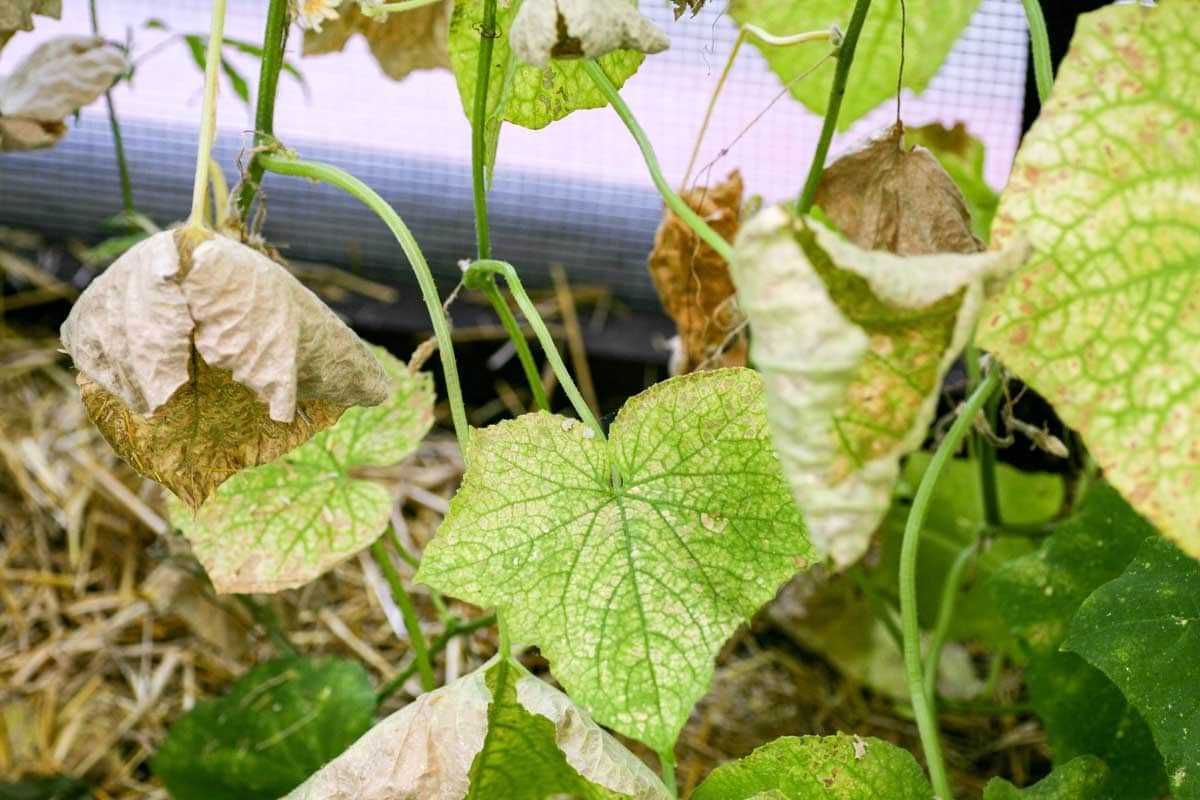
Leaf spot is a fungal disease that causes circular, dark spots on the leaves of cucumber plants. These spots can grow in size and may eventually lead to leaf yellowing and defoliation. Fungicides can be used to control leaf spot, and it is also important to practice proper plant sanitation, such as removing infected leaves.
4. Anthracnose
Anthracnose is a fungal disease that affects cucumber leaves, causing dark, sunken lesions. These lesions can expand and lead to leaf wilting and death. To control anthracnose, it is important to limit leaf wetness and provide proper plant spacing for good air circulation. Fungicides can also be used as a preventive measure.
5. Bacterial Wilt
Bacterial wilt is a disease caused by the bacterium Ralstonia solanacearum. It is characterized by wilting of leaves, starting from the lower leaves and progressing upwards. The disease can cause significant damage to cucumber plants and often leads to plant death. There is no effective treatment for bacterial wilt, so it is important to take preventive measures such as using disease-resistant cucumber varieties and practicing good sanitation.
Proper identification and timely treatment of leaf diseases can help prevent their spread and minimize damage to cucumber plants. Regular inspection of leaves and prompt action can ensure healthy and productive cucumber crops.
Stem Diseases
Stem diseases can greatly affect the health and productivity of cucumber plants. It is important to identify and treat these diseases early to prevent further damage. Here are some common stem diseases that affect cucumbers and their effective treatments:
1. Bacterial Wilt
Bacterial wilt is a serious disease caused by the bacterium Pseudomonas syringae pv. lachrymans. It is transmitted by cucumber beetles and affects the vascular system of the plant, causing wilting and eventually death.
- Symptoms: Affected plants exhibit wilting, yellowing of leaves, and wilted stems that may ooze a sticky liquid when cut.
- Treatment: There is no cure for bacterial wilt. Infected plants should be removed and destroyed. Use insecticides to control cucumber beetles and prevent the spread of the disease.
2. Fusarium Wilt
Fusarium wilt is caused by the fungus Fusarium oxysporum and is a common cucumber disease. It infects the vascular system, restricting the flow of water and nutrients.
- Symptoms: Infected plants show wilting of leaves, yellowing, and stunting. The lower stem may show dark brown discoloration.
- Treatment: There is no cure for Fusarium wilt. Remove and destroy infected plants. Rotate crops and use disease-resistant cucumber varieties to prevent further infections.
3. Phytophthora Blight
Phytophthora blight is caused by the oomycete Phytophthora capsici. It affects the stems, leaves, and fruits of cucumber plants.
- Symptoms: Infected plants develop water-soaked lesions on the stems. Leaves may also show lesions and wilting. Fruits may rot and develop soft, watery spots.
- Treatment: Remove and destroy infected plants. Use fungicides to control the spread of the disease. Improve drainage in the garden to reduce the risk of infection.
4. Stem Canker
Stem canker is caused by the fungus Diaporthe cucurbitae and affects the stems of cucumber plants.
- Symptoms: Infected stems show sunken, brown lesions, which may girdle the stem and cause wilting and plant death.
- Treatment: Remove and destroy infected plants. Crop rotation and avoiding overhead irrigation can help prevent the disease. Fungicides can be used to protect healthy plants.
By identifying and treating stem diseases early, you can help ensure the health and productivity of your cucumber plants. Remember to practice good sanitation and avoid planting in areas with a history of these diseases to prevent future infections.
Pest Infestation
Pests are a common problem in cucumber plants and can cause significant damage if not properly controlled. Here are some of the most common pests that infest cucumber plants:
1. Aphids
Aphids are small insects that feed on the sap of cucumber plants. They reproduce quickly and can cause stunted growth, yellowing leaves, and curled leaves. To control aphids, you can spray the plants with insecticidal soap or use natural predators like ladybugs.
2. Spider Mites
Spider mites are tiny pests that suck the sap from cucumber leaves, causing them to turn yellow and develop a stippled appearance. They also produce webbing, which can cover the leaves. To control spider mites, you can spray the plants with water or use insecticidal soap.
3. Cucumber Beetles
Cucumber beetles are small, striped insects that can cause significant damage to cucumber plants. They feed on the leaves, flowers, and fruits of the plant, and also transmit bacterial wilt disease. To control cucumber beetles, you can use row covers, floating row covers, or insecticidal sprays.
4. Whiteflies
Whiteflies are small, winged insects that infest cucumber plants and suck the sap from the leaves. They can cause the leaves to turn yellow and wilt. To control whiteflies, you can use yellow sticky traps, insecticidal soap, or natural predators like parasitic wasps.
5. Slugs and Snails
Slugs and snails can feed on cucumber leaves, stems, and fruits, leaving behind large holes and slime trails. To control slugs and snails, you can handpick them from the plants, set up beer traps, or use copper barriers to deter them.
It is important to regularly monitor your cucumber plants for signs of pest infestation and take appropriate action to control the pests. Using a combination of cultural practices, natural predators, and organic insecticides can help keep pest populations in check and protect your cucumber plants.
Effective Treatments and Prevention
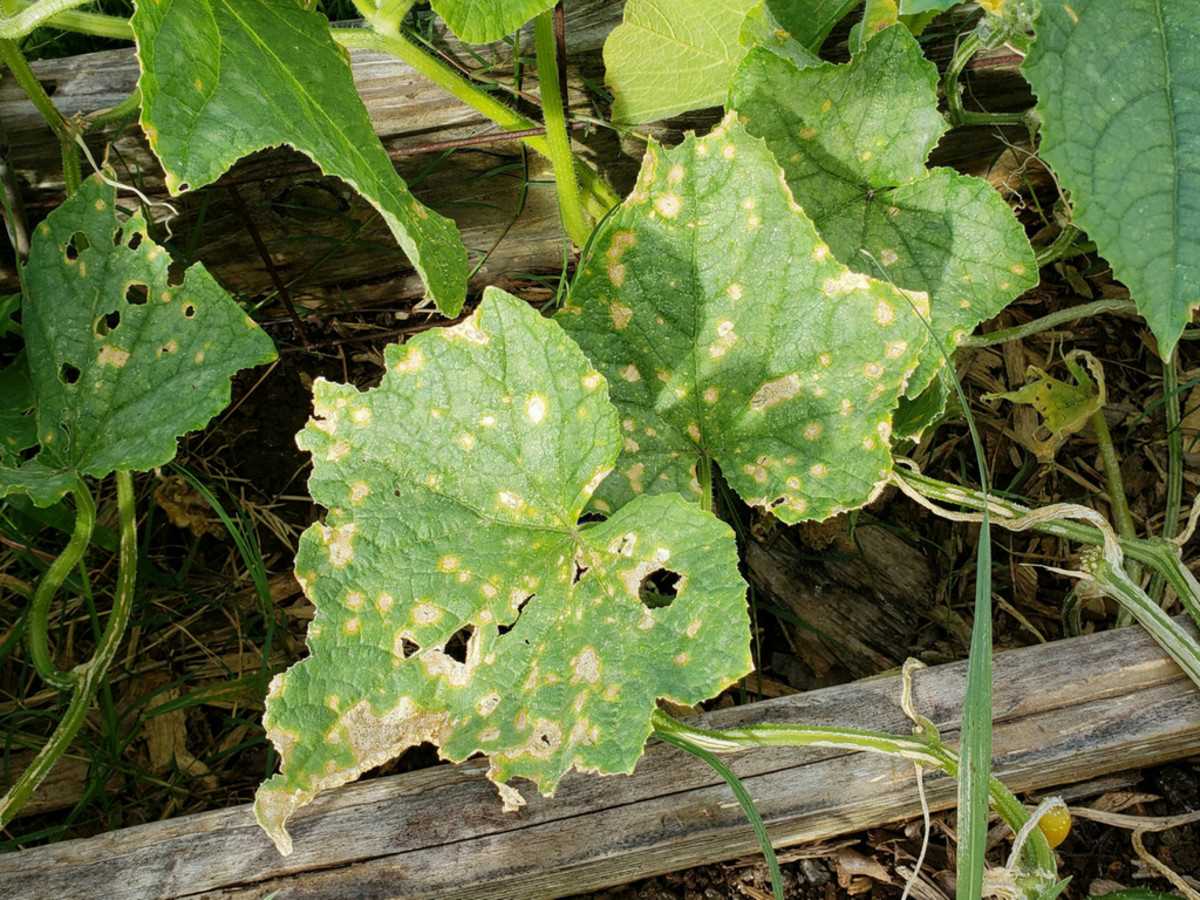
1. Fungicides
Fungicides can be used to treat cucumber diseases caused by fungi. They work by inhibiting the growth and reproduction of fungal pathogens and can prevent further spread of the disease.
2. Crop Rotation
Crop rotation is an effective method to prevent the recurrence of diseases. Avoid planting cucumbers in the same spot for consecutive years. Rotating crops will disrupt the life cycle of pathogens and reduce the risk of disease transmission.
3. Proper Irrigation
Proper irrigation techniques can help prevent diseases caused by excessive moisture. Avoid over-watering, as it can create a suitable environment for fungal growth. It is also important to water the plants at the base, rather than from overhead, to minimize the chances of fungal spores splashing onto the leaves.
4. Sanitation
Maintaining good sanitation practices in the garden is crucial for disease prevention. Remove and destroy any infected plant material as soon as possible to prevent the disease from spreading. Regularly clean tools, equipment, and containers to eliminate any potential sources of infection.
5. Resistant Varieties
Planting cucumber varieties that are resistant to common diseases can significantly reduce the risk of infection. Choose varieties that are known for their resistance to diseases such as powdery mildew, downy mildew, and bacterial wilt.
6. Proper Plant Spacing
Adequate plant spacing is important to ensure good air circulation. This helps to prevent the build-up of humidity, which can lead to the development of fungal diseases. Follow the recommended spacing guidelines for cucumber plants to allow for proper ventilation and sunlight penetration.
7. Regular Inspections
Regularly inspect the cucumber plants for any signs of disease or pests. Early detection allows for prompt treatment, reducing the risk of severe damage. Look out for yellowing leaves, spots, wilting, or any other abnormal symptoms.
8. Integrated Pest Management
Implementing an integrated pest management (IPM) program can help control pests that may transmit diseases to the cucumber plants. IPM involves a combination of cultural, biological, and chemical control measures to manage pest populations effectively.
9. Mulching
Mulching the soil around cucumber plants can help prevent the spread of diseases. Mulch acts as a barrier, reducing the chances of soil-borne pathogens splashing onto the leaves. It also helps conserve soil moisture and regulate soil temperature.
10. Nutrient Management
Proper nutrient management is essential for maintaining healthy cucumber plants. Ensure the plants receive adequate nutrition by regularly fertilizing according to soil test recommendations. Well-nourished plants are more resistant to diseases and better able to withstand infections.
| Disease | Treatment |
|---|---|
| Anthracnose | Use fungicides according to label instructions |
| Downy Mildew | Apply fungicides specifically formulated for downy mildew control |
| Powdery Mildew | Apply fungicides labeled for powdery mildew control |
| Bacterial Wilt | Remove and destroy infected plants |
| Angular Leaf Spot | Use copper-based fungicides |
“Question-Answer”
What are the most common diseases that affect cucumbers?
The most common diseases that affect cucumbers are powdery mildew, downy mildew, cucumber mosaic virus, bacterial wilt, and anthracnose.
What are the symptoms of powdery mildew?
The symptoms of powdery mildew on cucumber plants include a white powdery coating on the leaves, stems, and fruits, as well as distorted growth and eventually plant death.
How can I treat powdery mildew on cucumbers?
There are several effective treatments for powdery mildew on cucumbers. You can use a fungicide specifically designed to treat powdery mildew, remove and destroy infected plant parts, improve air circulation, and apply a preventative fungicide before the disease appears.
What is cucumber mosaic virus?
Cucumber mosaic virus is a viral disease that affects cucumber plants. It is spread by aphids and is characterized by mosaic-like patterns on the leaves, stunted growth, and distorted fruits.
Can cucumber mosaic virus be cured?
There is no cure for cucumber mosaic virus once a plant is infected. The best course of action is to remove and destroy infected plants to prevent the spread of the virus to other cucumbers.
How can I prevent cucumber diseases in my garden?
To prevent cucumber diseases in your garden, you should practice good sanitation by removing and destroying infected plant parts, avoid overwatering and overcrowding, promote good air circulation, and consider using disease-resistant cucumber varieties.







